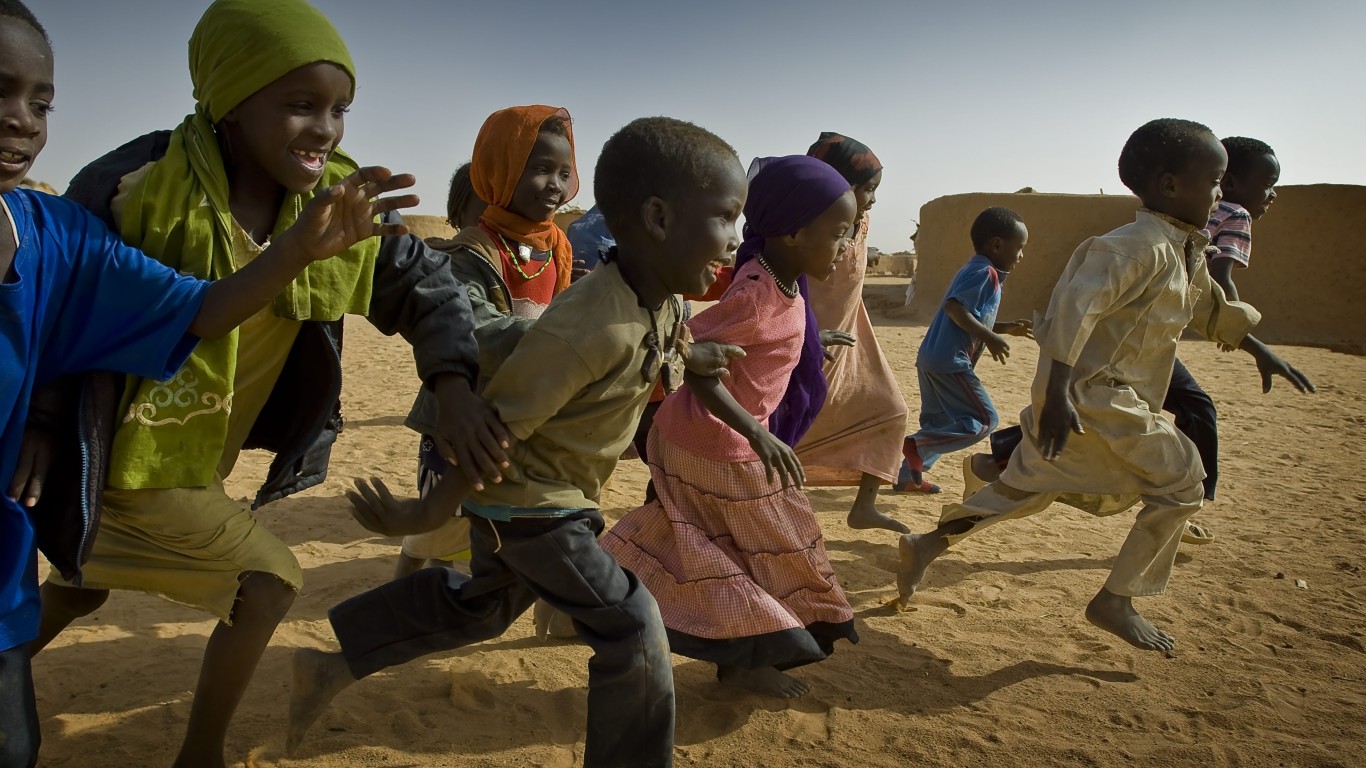
The poorest countries in the world face significant challenges in their economic development and their populations’ well-being. These countries, many of which are located in sub-Saharan Africa and parts of Asia, grapple with issues such as extreme poverty, limited access to health care and education, political instability, and environmental pressures. One measure of a country’s wealth is gross national income. (Some of the poorest countries also rank among the 30 least happy countries in the world.)
GNI is a useful measure of a country’s wealth as it takes into account both the income generated domestically and income earned from abroad for a more comprehensive reflection of a nation’s economic performance.
When the total GNI of a country is divided by its population, GNI per capita can provide insights into a nation’s standard of living. For example, residents of countries with the lowest GNI per capita often have low life expectancies as such countries often struggle to provide basic necessities for their populations.
To determine the poorest countries in the world, 24/7 Wall St. reviewed data on gross national income per capita for 198 countries and special regions with available data from the World Bank. The World Bank estimates GNI per capita using the purchasing power parity method, and figures are in current international dollars. We listed the 22 countries with GNIs per capita of less than $2,500. Additional data, measuring GDP in current international dollars, population, and life expectancy at birth also came from the World Bank, while estimated population growth came from the CIA’s World Factbook.
All but one of the 22 poorest countries are in Africa. GNI per capita among countries on this list ranges from as low as $780 to no more than $2,410. For reference, the United States’ GNI per capita is $70,480, while the average GNI per capita worldwide is $18,511, more than 7.5 times the highest figure on the list. Conversely, this is the richest country in the world.
Life expectancy at birth in the poorest countries in the world ranges from 52.5 years – the lowest of all countries – to 66.5 years, well below the average worldwide of 71 years. Meanwhile, population growth is among the highest in the world among the poorest countries.
The countries on this list are often either recovering from a prolonged armed conflict or are still embroiled in one. This includes Afghanistan, the only non-African country, which seems to have been in one kind of armed conflict or another almost continuously since the Soviet-Afghan war of the ‘80s, including the recent 20-year U.S. and its allies invasion of the country. Here are 13 major wars happening around the world right now.
Click here to see the poorest countries in the world.
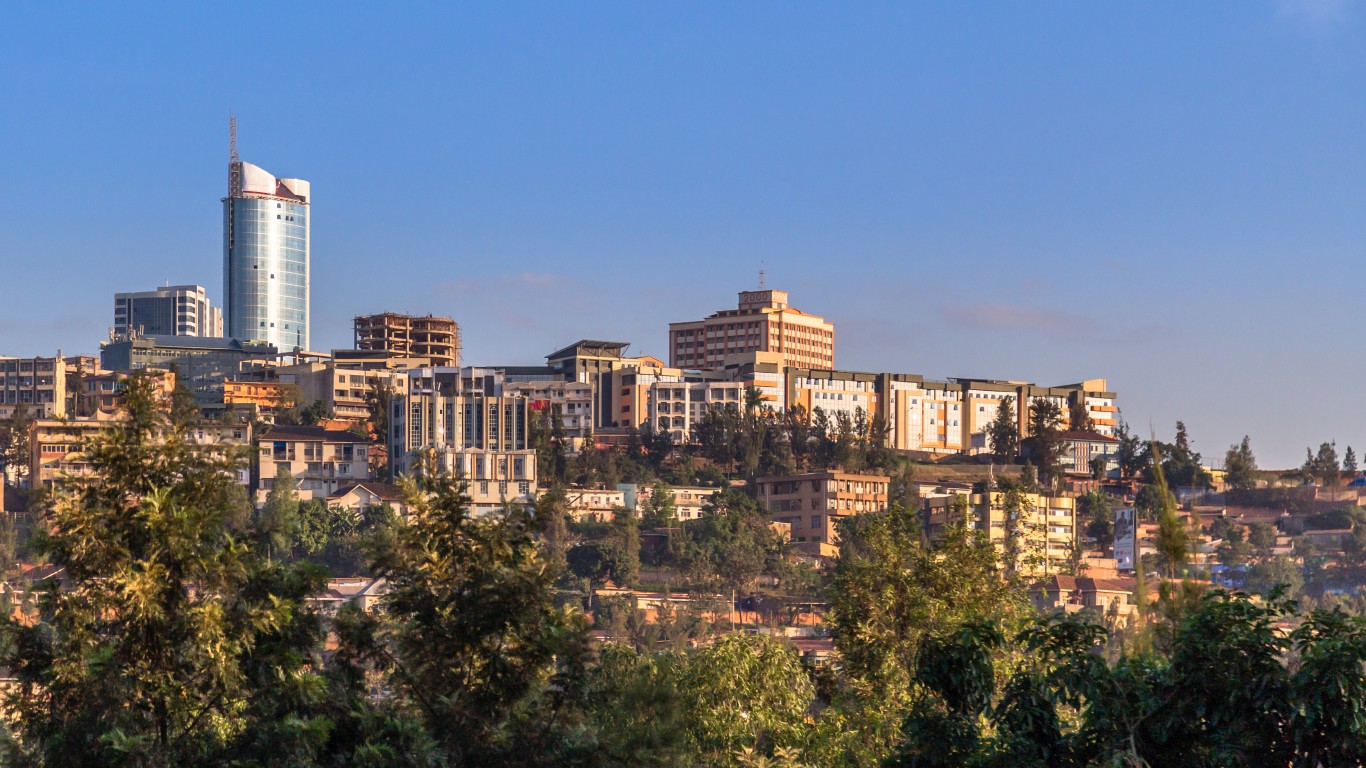
22. Rwanda
> GNI per capita, 2021: $2,410
> GDP, 2021: $11.07 billion (#66 lowest of 214 countries)
> Avg. life expectancy at birth, 2021: 66.1 years (#52 lowest of 194 countries)
> Population growth, 2023 est.: 1.7% (#54 highest of 237 countries)
> Population, 2021: 13,461,888
Rwanda, a landlocked country in east-central Africa, has made significant progress in health care and other areas since the 1994 genocide against the Tutsi. Still, its economy is based mostly on agriculture, though tourism was a growing sector before the COVID-19 pandemic. With a myriad of environmental concerns, Rwanda has taken a proactive approach to improve its environment and climate change issues.
[in-text-ad]

21. Togo
> GNI per capita, 2021: $2,340
> GDP, 2021: $8.41 billion (#59 lowest of 214 countries)
> Avg. life expectancy at birth, 2021: 61.6 years (#26 lowest of 194 countries)
> Population growth, 2023 est.: 2.5% (#24 highest of 237 countries)
> Population, 2021: 8,644,829
Togo, situated in West Africa, has a coastline along the Gulf of Guinea. The country faces challenges related to poverty, limited access to health care and education, and political instability. The country’s economy relies on agriculture, phosphate mining, and port services.
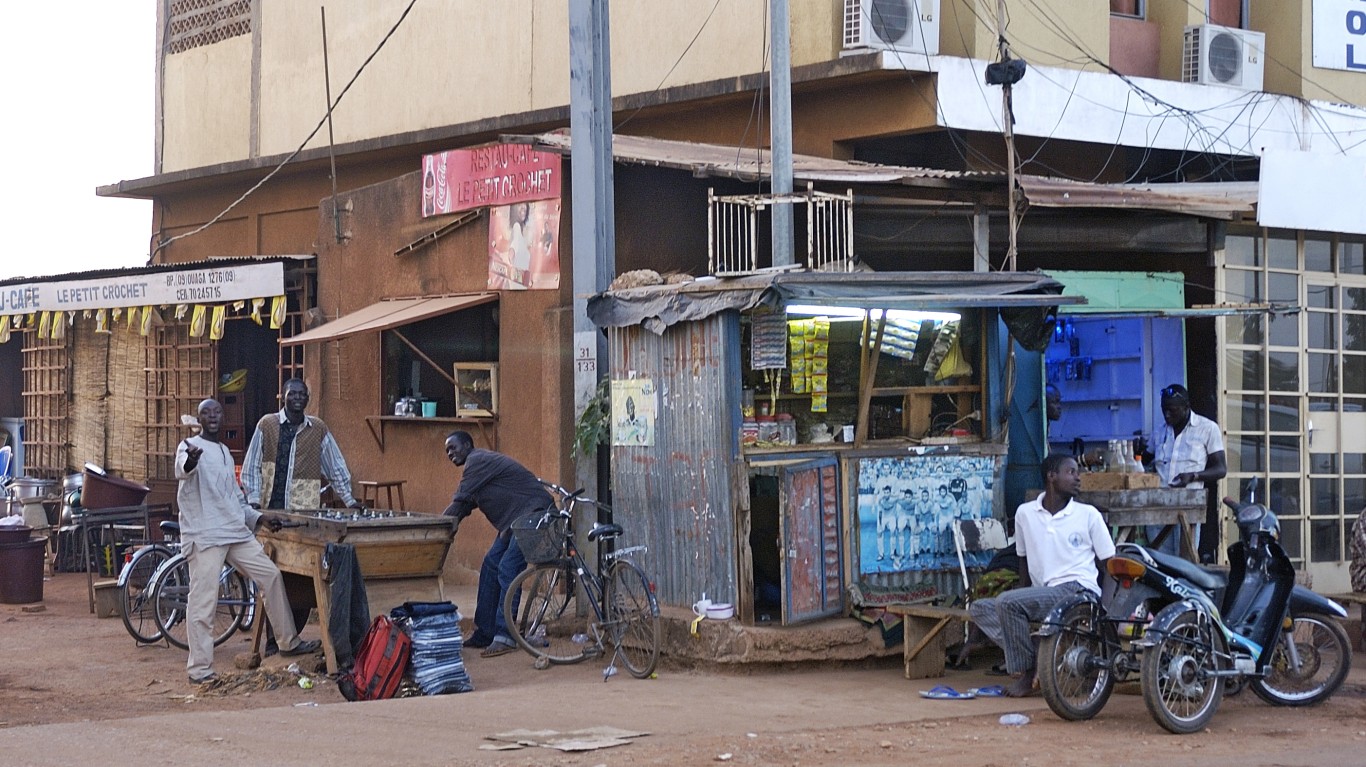
20. Burkina Faso
> GNI per capita, 2021: $2,270
> GDP, 2021: $19.74 billion (#97 lowest of 214 countries)
> Avg. life expectancy at birth, 2021: 59.3 years (#14 lowest of 194 countries)
> Population growth, 2023 est.: 2.5% (#23 highest of 237 countries)
> Population, 2021: 22,100,683
Burkina Faso is another country on the list with one of the lowest life expectancy in the world, at not even 60 years. In the United States, life expectancy is 76 years and in many affluent nations, it is higher than 80. The country, situated in West Africa, battles poverty, political instability, security concerns, and environmental challenges such as desertification in addition to obstacles in education, health care, and infrastructure development. The economy is largely based on agriculture, although gold exports have increased.

19. Zimbabwe
> GNI per capita, 2021: $2,270
> GDP, 2021: $28.37 billion (#109 lowest of 214 countries)
> Avg. life expectancy at birth, 2021: 59.3 years (#12 lowest of 194 countries)
> Population growth, 2023 est.: 2.0% (#41 highest of 237 countries)
> Population, 2021: 15,993,524
Located in Southern Africa, Zimbabwe’s economy faces challenges such as governance issues, unemployment, and limited foreign investment. It struggles with poverty, and progress in health care has stagnated in recent years. The country possesses abundant mineral and natural resources, such as platinum and diamonds, which contribute to its economic potential.
[in-text-ad-2]
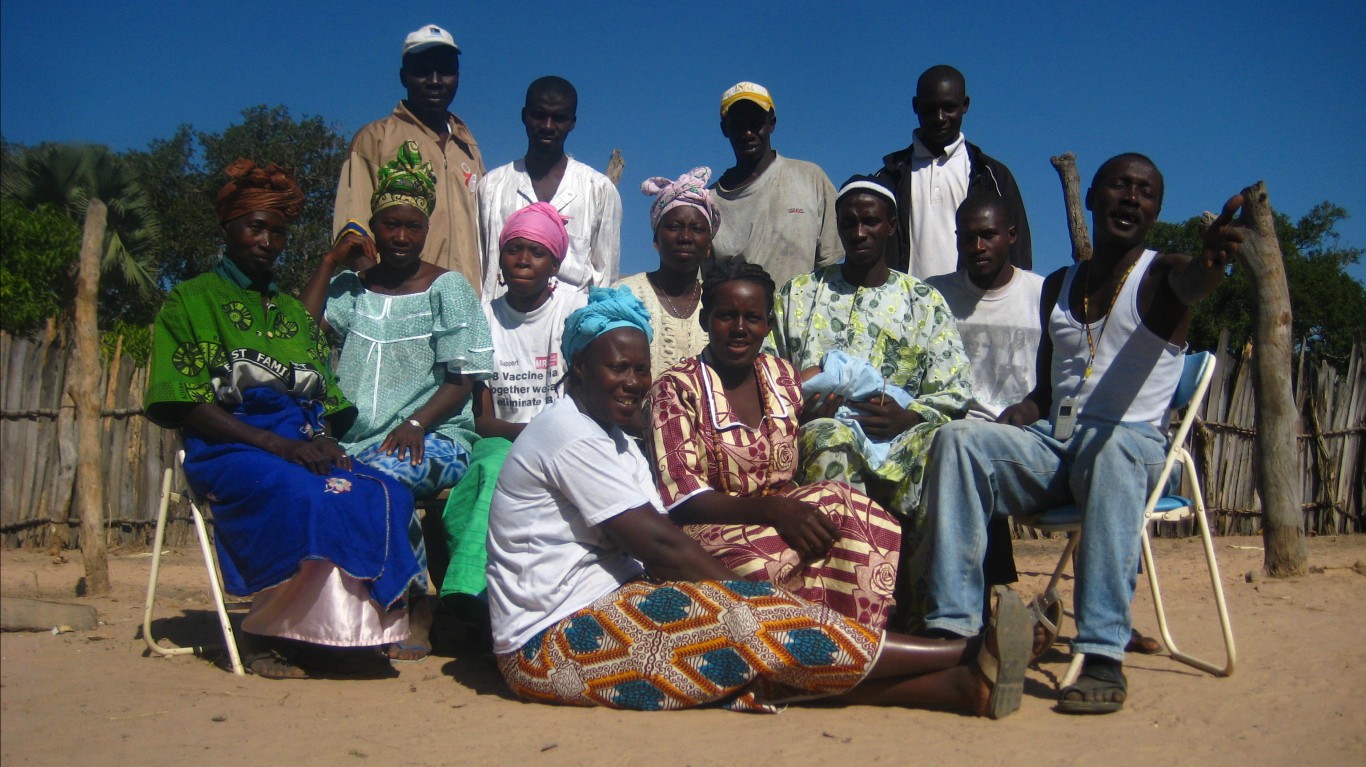
18. Gambia, The
> GNI per capita, 2021: $2,220
> GDP, 2021: $2.04 billion (#28 lowest of 214 countries)
> Avg. life expectancy at birth, 2021: 62.1 years (#30 lowest of 194 countries)
> Population growth, 2023 est.: 2.2% (#33 highest of 237 countries)
> Population, 2021: 2,639,916
The Gambia, situated in West Africa, struggles with poverty, limited access to quality education and health care, and vulnerability to climate change. It also faces challenges related to governance and human rights. The Gambia’s economy relies on agriculture, tourism, and remittances.
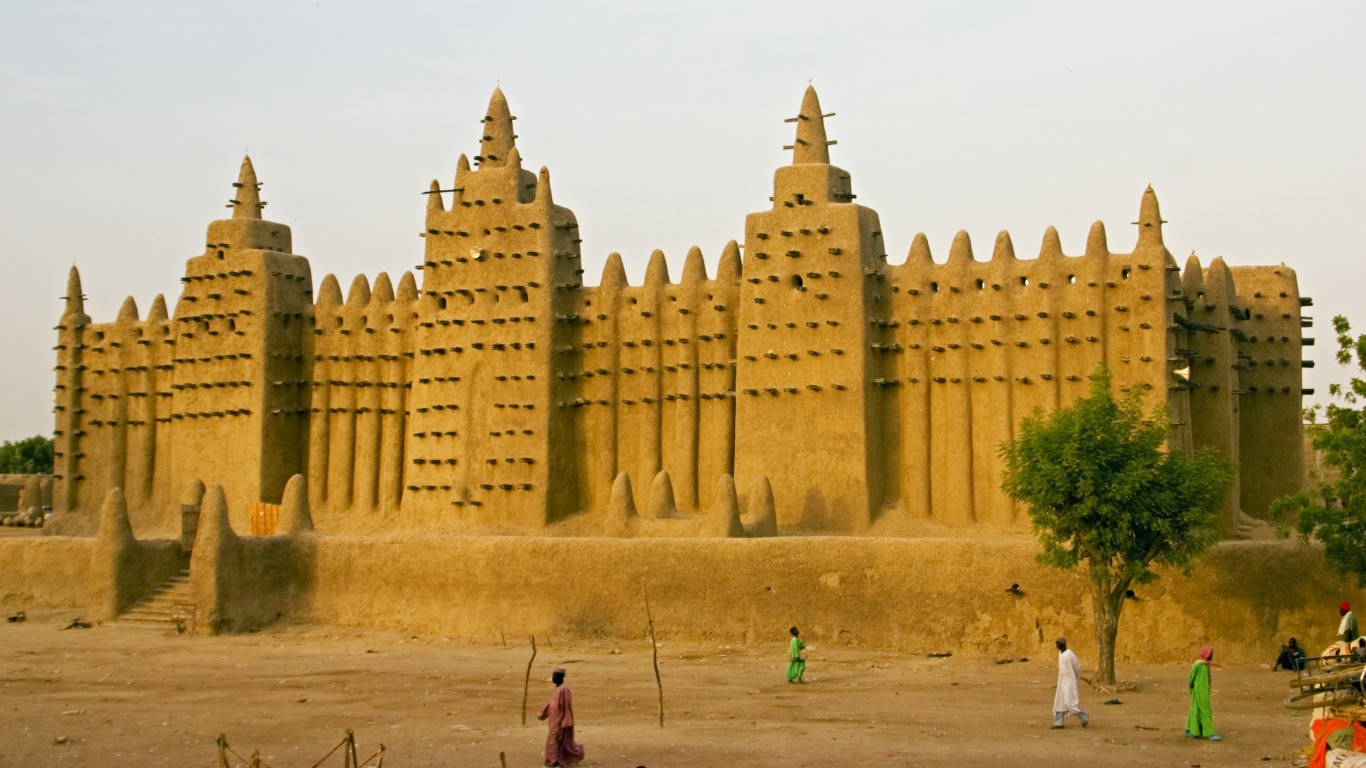
17. Mali
> GNI per capita, 2021: $2,220
> GDP, 2021: $19.14 billion (#96 lowest of 214 countries)
> Avg. life expectancy at birth, 2021: 58.9 years (#10 lowest of 194 countries)
> Population growth, 2023 est.: 2.9% (#11 highest of 237 countries)
> Population, 2021: 21,904,983
Located in West Africa, Mali has the 10th lowest life expectancy in the world. The country’s economy is based on agriculture and mining, particularly gold, but it faces challenges related to political instability, armed conflict, terrorism, and ethnic tensions. It also confronts high levels of poverty, inadequate infrastructure, and limited access to basic services.
[in-text-ad]
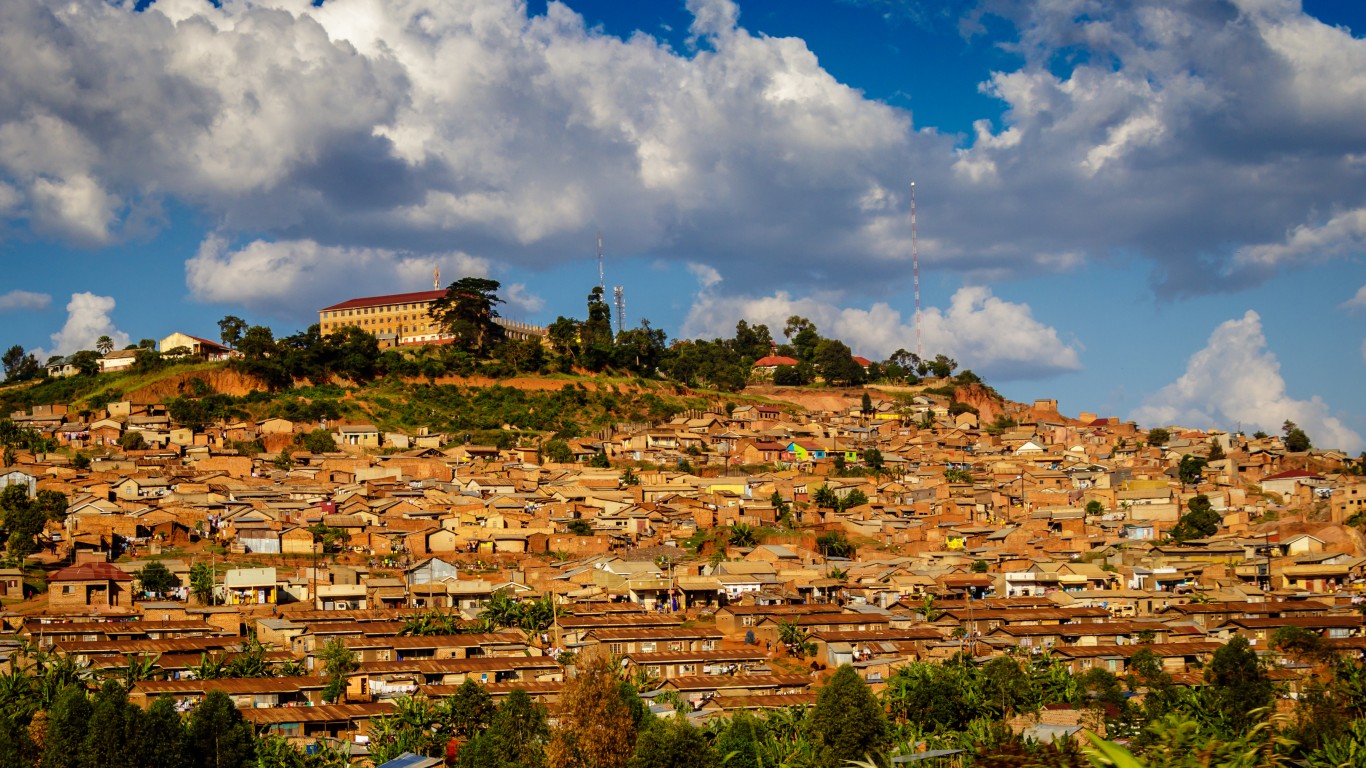
16. Uganda
> GNI per capita, 2021: $2,140
> GDP, 2021: $40.53 billion (#121 lowest of 214 countries)
> Avg. life expectancy at birth, 2021: 62.7 years (#33 lowest of 194 countries)
> Population growth, 2023 est.: 3.2% (#8 highest of 237 countries)
> Population, 2021: 45,853,778
Situated in East-Central Africa, Uganda’s economy is based on agriculture but also has some natural resources — gold and coffee are major exports. However, Uganda faces challenges related to poverty, health care, and infrastructure development. It also deals with issues such as high population growth, regional conflicts, refugee influxes, and environmental sustainability.

15. Guinea-Bissau
> GNI per capita, 2021: $2,010
> GDP, 2021: $1.64 billion (#25 lowest of 214 countries)
> Avg. life expectancy at birth, 2021: 59.7 years (#16 lowest of 194 countries)
> Population growth, 2023 est.: 2.5% (#19 highest of 237 countries)
> Population, 2021: 2,060,721
Located in West Africa, Guinea-Bissau’s economy relies on agriculture, including cashew nuts and fishing. However, political instability, corruption, and drug trafficking pose significant challenges to development. One of 17 countries in the world with a life expectancy under 60 years, the country faces high levels of poverty and struggles with low economic diversification, limited access to health care and education, and inadequate infrastructure.
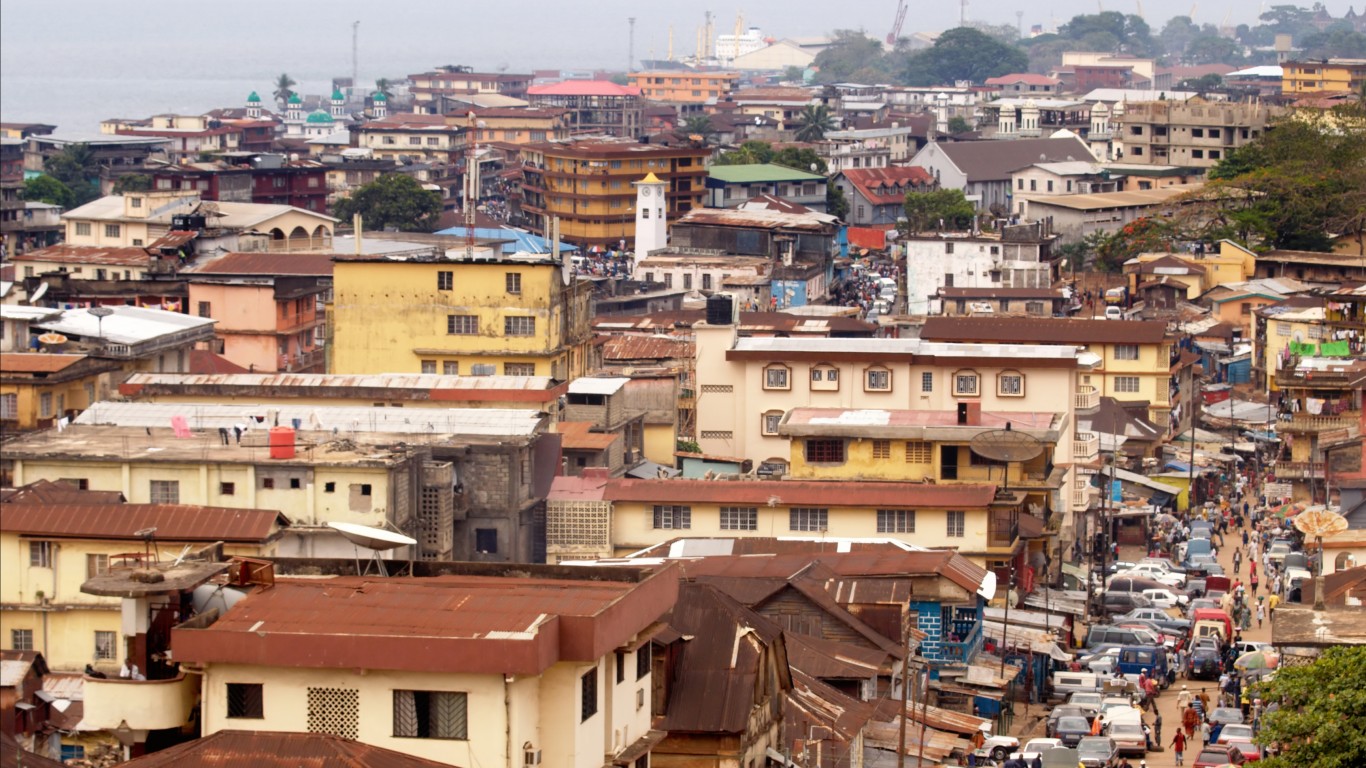
14. Sierra Leone
> GNI per capita, 2021: $1,750
> GDP, 2021: $4.04 billion (#44 lowest of 214 countries)
> Avg. life expectancy at birth, 2021: 60.1 years (#18 lowest of 194 countries)
> Population growth, 2023 est.: 2.4% (#26 highest of 237 countries)
> Population, 2021: 8,420,641
Situated on the West African coast, Sierra Leone is still recovering from a civil war and faces significant challenges in poverty reduction, health care, education, and infrastructure development. The country is rich in mineral resources, including diamonds and iron ore, and the economy has agriculture and construction activity.
[in-text-ad-2]
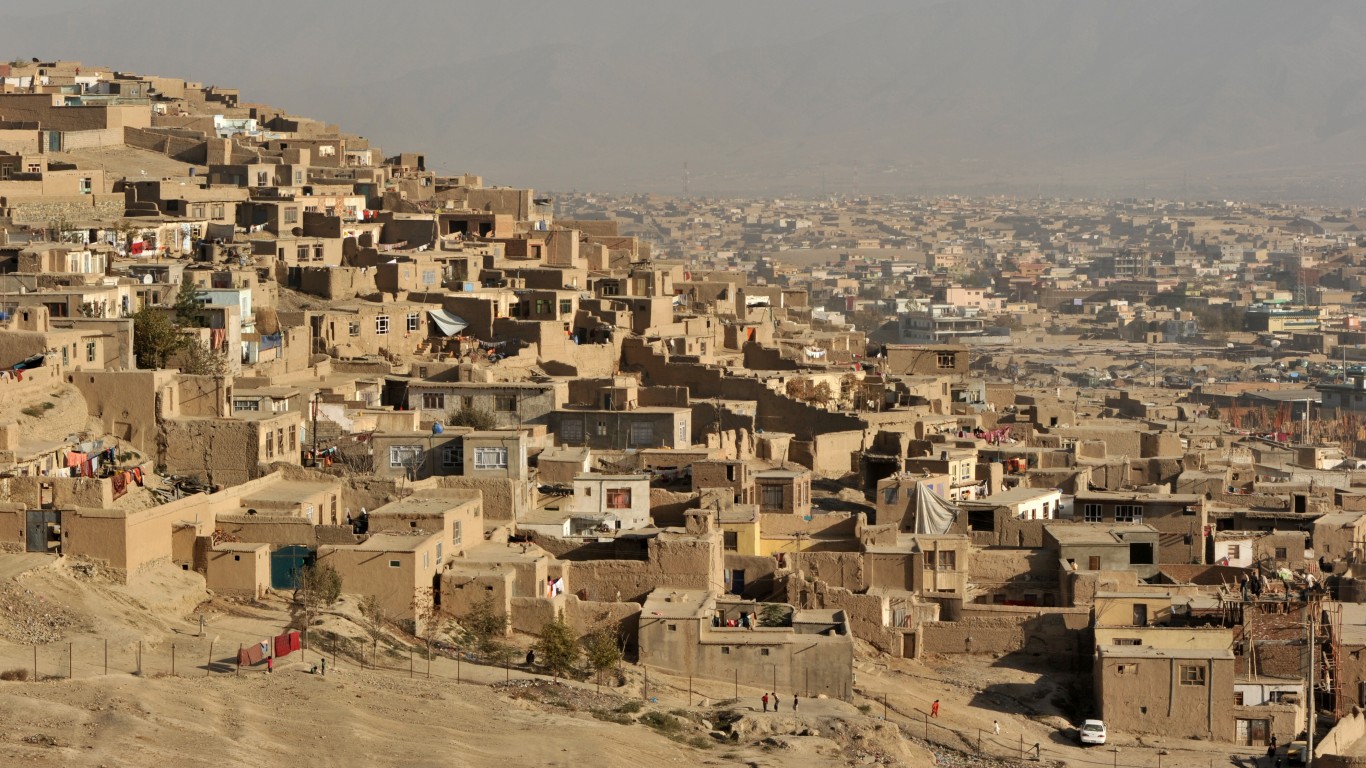
13. Afghanistan
> GNI per capita, 2021: $1,680
> GDP, 2021: $14.79 billion (#84 lowest of 214 countries)
> Avg. life expectancy at birth, 2021: 62.0 years (#29 lowest of 194 countries)
> Population growth, 2023 est.: 2.3% (#32 highest of 237 countries)
> Population, 2021: 40,099,462
The only non-African country on the list, Afghanistan’s economy is primarily agrarian. The country has experienced decades of conflict and instability, resulting in high levels of poverty, weak governance, and limited access to basic services such as health care and education. The recent Taliban takeover following the U.S. withdrawal resulted in currency depreciation, disappearing central bank reserves, and increasing inflation.
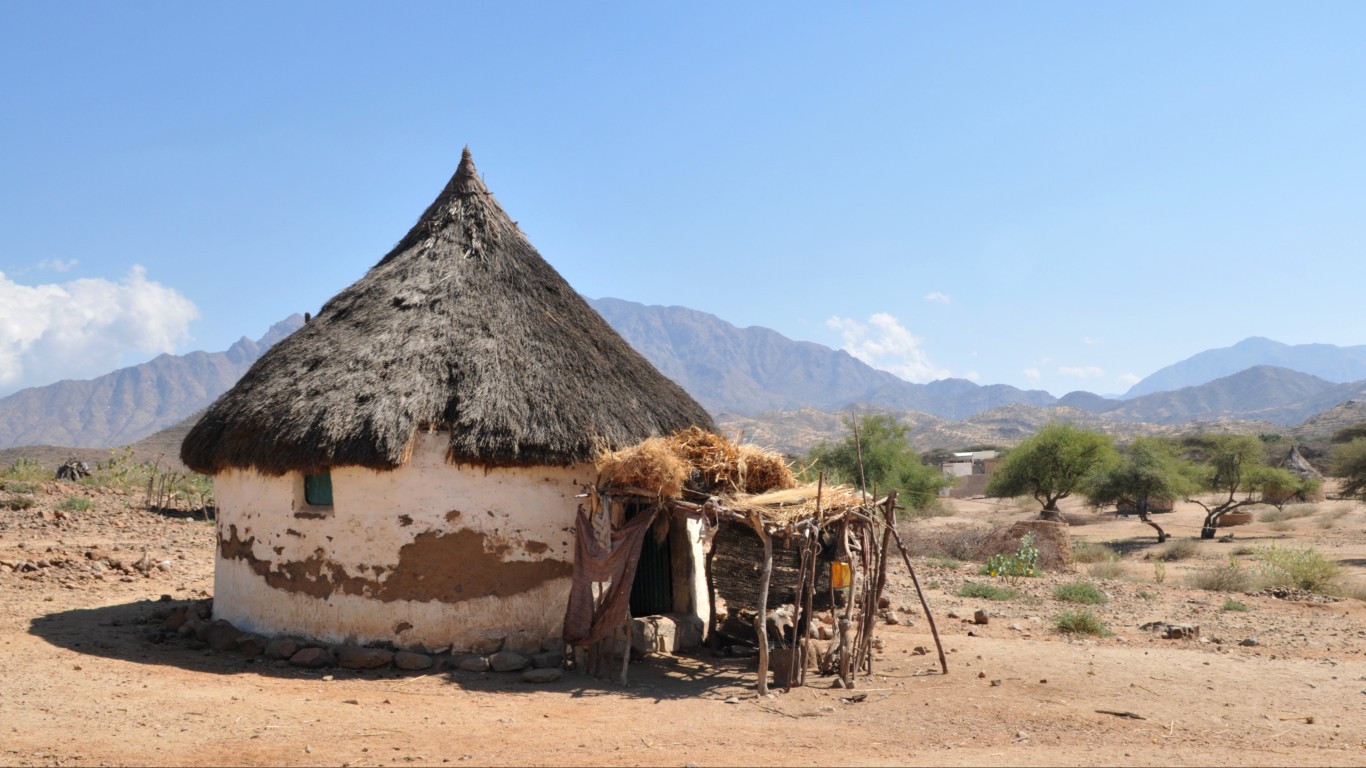
12. Eritrea
> GNI per capita, 2011: $1,610
> GDP, 2011: $2.07 billion (#29 lowest of 214 countries)
> Avg. life expectancy at birth, 2021: 66.5 years (#55 lowest of 194 countries)
> Population growth, 2023 est.: 1.1% (#87 highest of 237 countries)
> Population, 2021: 3,620,312
Eritrea, located in the Horn of Africa, has a diverse geography, but it is a largely agrarian economy with a significant mining sector. The country faces human rights challenges such as political repression, limited freedom of expression, and compulsory national service, which contribute to high levels of poverty and limited economic opportunities. Because of data integrity challenges, Eritrea’s GNI per capita is from 2011.
[in-text-ad]
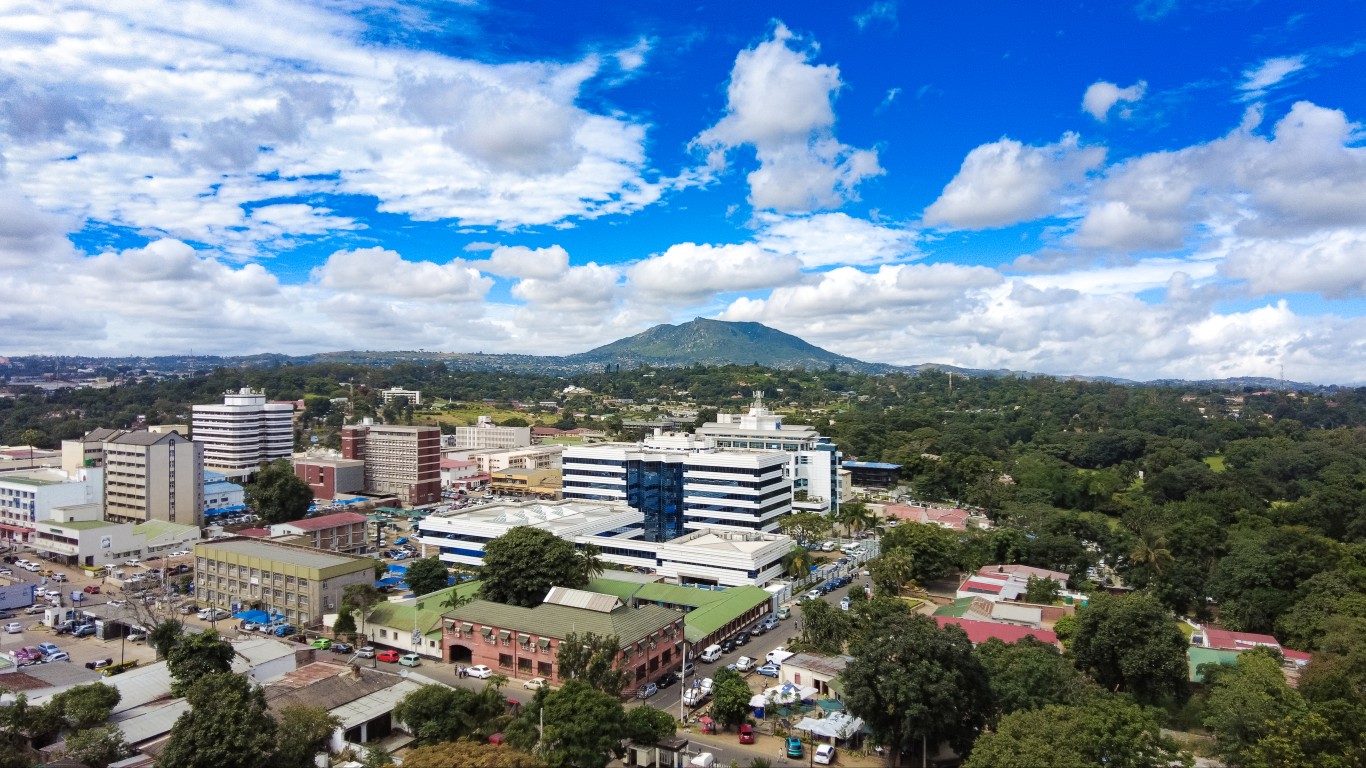
11. Malawi
> GNI per capita, 2021: $1,610
> GDP, 2021: $12.63 billion (#75 lowest of 214 countries)
> Avg. life expectancy at birth, 2021: 62.9 years (#34 lowest of 194 countries)
> Population growth, 2023 est.: 2.3% (#31 highest of 237 countries)
> Population, 2021: 19,889,742
Situated in Southern Africa, Malawi’s economy relies on agriculture, with a focus on tobacco, tea, and sugar exports. The country confronts numerous development challenges, including widespread poverty, food insecurity, limited access to health care and education, and poor infrastructure. It also faces environmental issues such as deforestation and climate change impacts.
10. Madagascar
> GNI per capita, 2021: $1,570
> GDP, 2021: $14.47 billion (#82 lowest of 214 countries)
> Avg. life expectancy at birth, 2021: 64.5 years (#43 lowest of 194 countries)
> Population growth, 2023 est.: 2.2% (#34 highest of 237 countries)
> Population, 2021: 28,915,653
Despite its rich biodiversity and natural resources, Madagascar faces high levels of poverty, deforestation, and inadequate infrastructure. Limited access to education and health care hampers its development progress. The economy of the island country, lying off the southeastern coast of Africa, relies on agriculture, particularly vanilla.
9. Chad
> GNI per capita, 2021: $1,510
> GDP, 2021: $11.78 billion (#71 lowest of 214 countries)
> Avg. life expectancy at birth, 2021: 52.5 years (#1 lowest of 194 countries)
> Population growth, 2023 est.: 3.0% (#10 highest of 237 countries)
> Population, 2021: 17,179,740
Chad, situated in Central Africa, has the lowest life expectancy at just 52.5 years. The country grapples with political instability, frequent droughts and desertification, poverty, and regional armed conflicts. It faces challenges in poverty reduction, education, health care, infrastructure development, and high population growth. Though the northern part of the landlocked country is covered in desert, the country has significant oil reserves and is an important transit route for regional trade.
[in-text-ad-2]

8. Liberia
> GNI per capita, 2021: $1,470
> GDP, 2021: $3.51 billion (#41 lowest of 214 countries)
> Avg. life expectancy at birth, 2021: 60.7 years (#21 lowest of 194 countries)
> Population growth, 2023 est.: 2.7% (#16 highest of 237 countries)
> Population, 2021: 5,193,416
Liberia, located on the west coast of Africa, has a unique historical significance as one of the few African countries founded by freed slaves, but it continues to recover from a long history of civil wars, which left its infrastructure and institutions severely damaged. Liberia has significant natural resources, including rubber and timber. However, the country faces challenges related to poverty reduction, education, and health care and experienced a bad recession prior to COVID-19 due to the ebola epidemic.
7. Niger
> GNI per capita, 2021: $1,330
> GDP, 2021: $14.92 billion (#85 lowest of 214 countries)
> Avg. life expectancy at birth, 2021: 61.6 years (#25 lowest of 194 countries)
> Population growth, 2023 est.: 3.7% (#3 highest of 237 countries)
> Population, 2021: 25,252,722
The Sahara Desert covers much of Niger, situated in West Africa. The landlocked country confronts numerous development challenges, including food insecurity, high fertility rates, which contributes to the world’s third highest population growth, and low access to health care and education systems. More than 41% of the population were living in extreme poverty in 2021. Other challenges include desertification and vulnerability to climate change.
[in-text-ad]
6. Mozambique
> GNI per capita, 2021: $1,320
> GDP, 2021: $15.78 billion (#87 lowest of 214 countries)
> Avg. life expectancy at birth, 2021: 59.3 years (#15 lowest of 194 countries)
> Population growth, 2023 est.: 2.6% (#18 highest of 237 countries)
> Population, 2021: 32,077,072
Despite its rich natural resources, including natural gas reserves, Mozambique faces significant development challenges, including poverty, limited access to quality health care and education, and vulnerability to natural disasters such as cyclones and floods. The country, located on the southeast coast of Africa, has one of the lowest life expectancy at birth, at 59.3 years.

5. Somalia
> GNI per capita, 2021: $1,240
> GDP, 2021: $7.63 billion (#57 lowest of 214 countries)
> Avg. life expectancy at birth, 2021: 55.3 years (#6 lowest of 194 countries)
> Population growth, 2023 est.: 2.5% (#22 highest of 237 countries)
> Population, 2021: 17,065,581
Somalia, situated in the Horn of Africa, has faced prolonged conflict and instability, as well as recurring droughts, making it one of the most challenging environments for economic development. The country struggles with weak governance, limited access to basic services, and widespread poverty. With its strategic location along the Gulf of Aden, Somalia has been known for piracy, though measures have reduced incidents considerably. Somalia’s economy relies heavily on remittances.
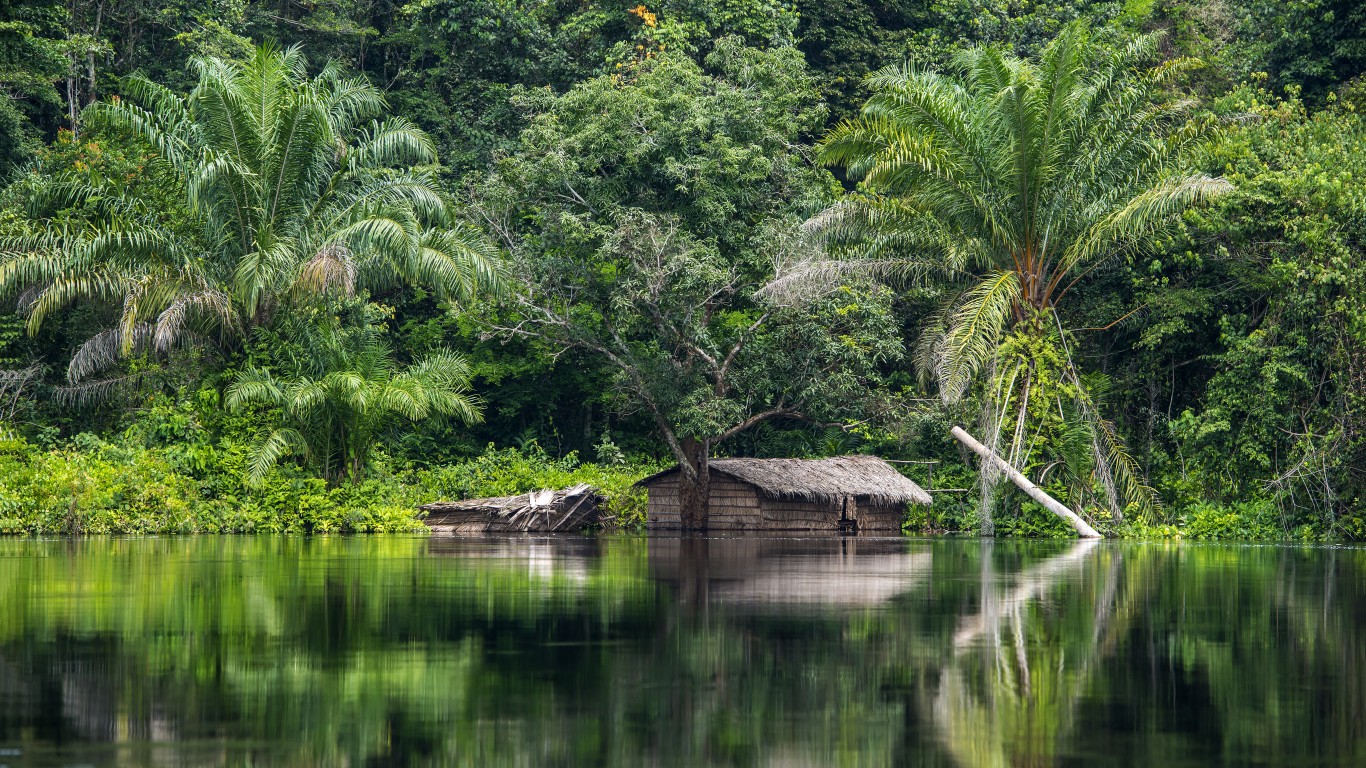
4. Congo, Dem. Rep.
> GNI per capita, 2021: $1,110
> GDP, 2021: $55.35 billion (#128 lowest of 214 countries)
> Avg. life expectancy at birth, 2021: 59.2 years (#11 lowest of 194 countries)
> Population growth, 2023 est.: 3.1% (#9 highest of 237 countries)
> Population, 2021: 95,894,118
The Democratic Republic of Congo, which is about the size of Western Europe, is the largest country in sub-Saharan Africa. The DRC grapples with prolonged ongoing conflicts, political instability, and widespread poverty. The country’s wealth of natural resources, including cobalt, copper, and diamonds, have been marred by corruption and mismanagement, hindering economic development and exacerbating poverty. The country is home to the Congo Rainforest, the second-largest tropical rainforest globally.
[in-text-ad-2]

3. South Sudan
> GNI per capita, 2015: $1,040
> GDP, 2015: $12.00 billion (#72 lowest of 214 countries)
> Avg. life expectancy at birth, 2021: 55.0 years (#5 lowest of 194 countries)
> Population growth, 2023 est.: 4.8% (#2 highest of 237 countries)
> Population, 2021: 10,748,272
The world’s youngest country, South Sudan gained independence in 2011. The East-Central Africa nation ranks third poorest, with a GNI per capita of $1,040 (2015 data) and a life expectancy of just 55 years, the world’s fifth lowest. It faces ongoing political turmoil, internal conflict, and humanitarian crises, contributing to high levels of poverty, food insecurity, and displacement. The country’s economy heavily relies on oil production, but conflicts and political instability have disrupted its development.
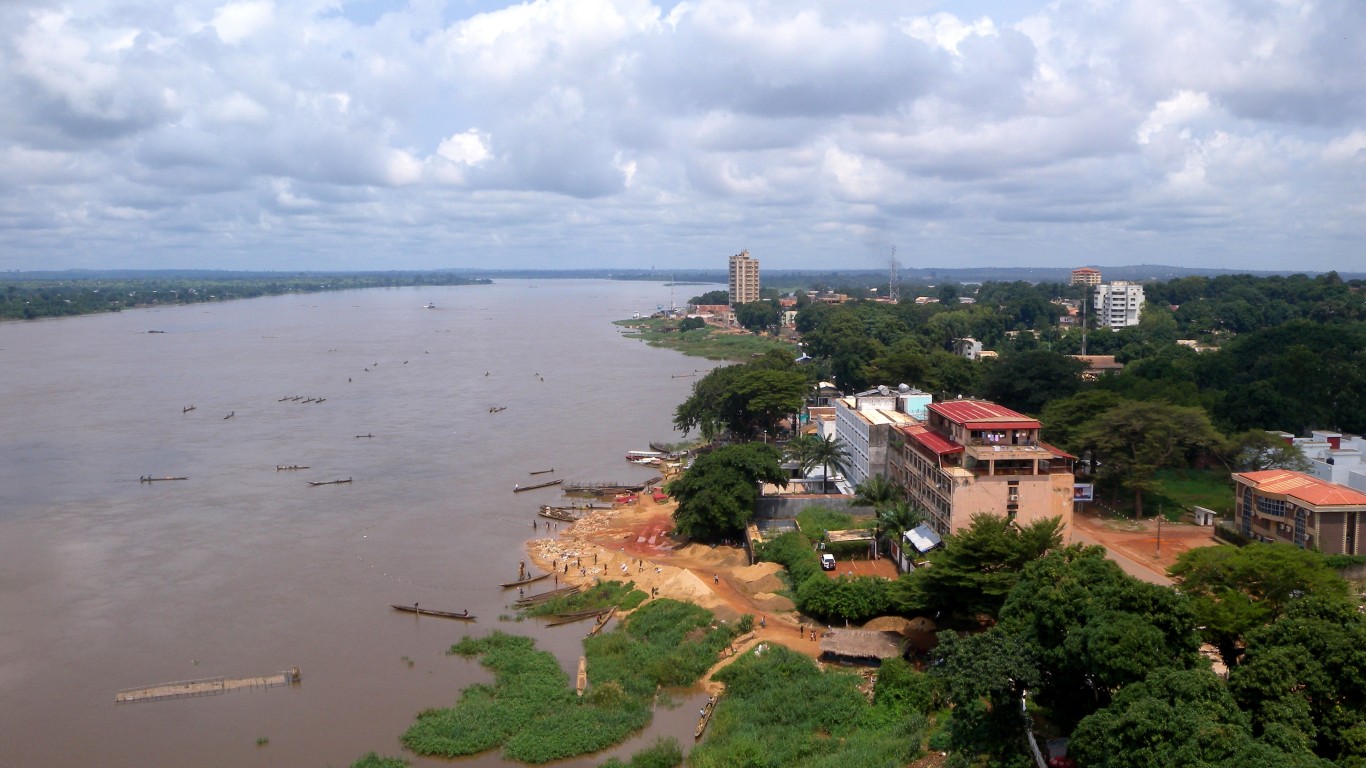
2. Central African Republic
> GNI per capita, 2021: $980
> GDP, 2021: $2.52 billion (#32 lowest of 214 countries)
> Avg. life expectancy at birth, 2021: 53.9 years (#4 lowest of 194 countries)
> Population growth, 2023 est.: 1.8% (#51 highest of 237 countries)
> Population, 2021: 5,457,154
The Central African Republic, with a GNI per capita of $980, has the fourth lowest life expectancy of 53.9 years. The country has been plagued by conflict, resulting in widespread violence, displacement, and economic instability. It struggles with severe poverty, inadequate infrastructure, and limited access to basic services. It is, however, rich in natural resources such as diamonds, gold, and timber.
[in-text-ad]
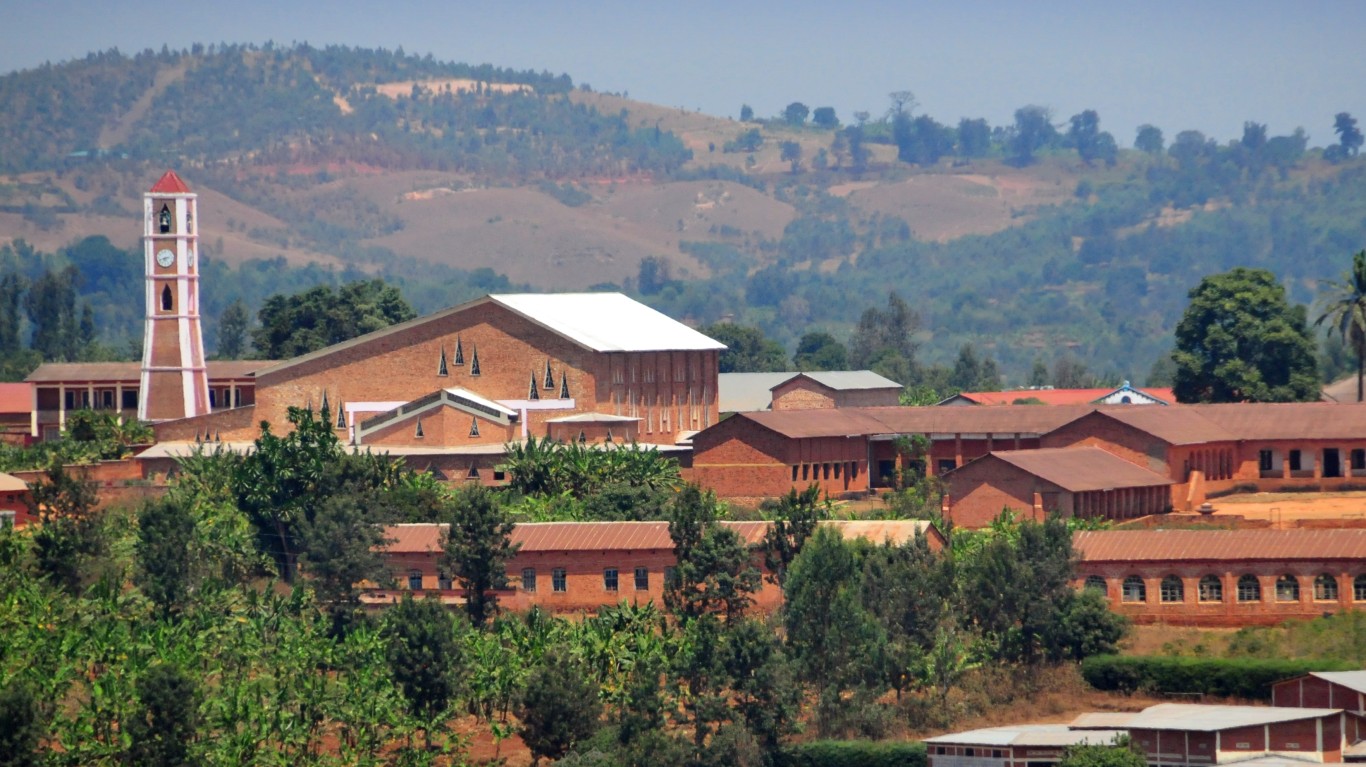
1. Burundi
> GNI per capita, 2021: $780
> GDP, 2021: $2.78 billion (#35 lowest of 214 countries)
> Avg. life expectancy at birth, 2021: 61.7 years (#28 lowest of 194 countries)
> Population growth, 2023 est.: 3.6% (#4 highest of 237 countries)
> Population, 2021: 12,551,213
Burundi, located east of the Democratic Republic of the Congo, is the poorest country in the world with a GNI per capita of $780. Economically, Burundi relies heavily on agriculture, including coffee and tea production. However, it faces challenges such as limited access to health care, hindering its overall development. High population growth contributes to its challenges.
Take Charge of Your Retirement In Just A Few Minutes (Sponsor)
Retirement planning doesn’t have to feel overwhelming. The key is finding expert guidance—and SmartAsset’s simple quiz makes it easier than ever for you to connect with a vetted financial advisor.
Here’s how it works:
- Answer a Few Simple Questions. Tell us a bit about your goals and preferences—it only takes a few minutes!
- Get Matched with Vetted Advisors Our smart tool matches you with up to three pre-screened, vetted advisors who serve your area and are held to a fiduciary standard to act in your best interests. Click here to begin
- Choose Your Fit Review their profiles, schedule an introductory call (or meet in person), and select the advisor who feel is right for you.
Why wait? Start building the retirement you’ve always dreamed of. Click here to get started today!
Thank you for reading! Have some feedback for us?
Contact the 24/7 Wall St. editorial team.

 24/7 Wall St.
24/7 Wall St.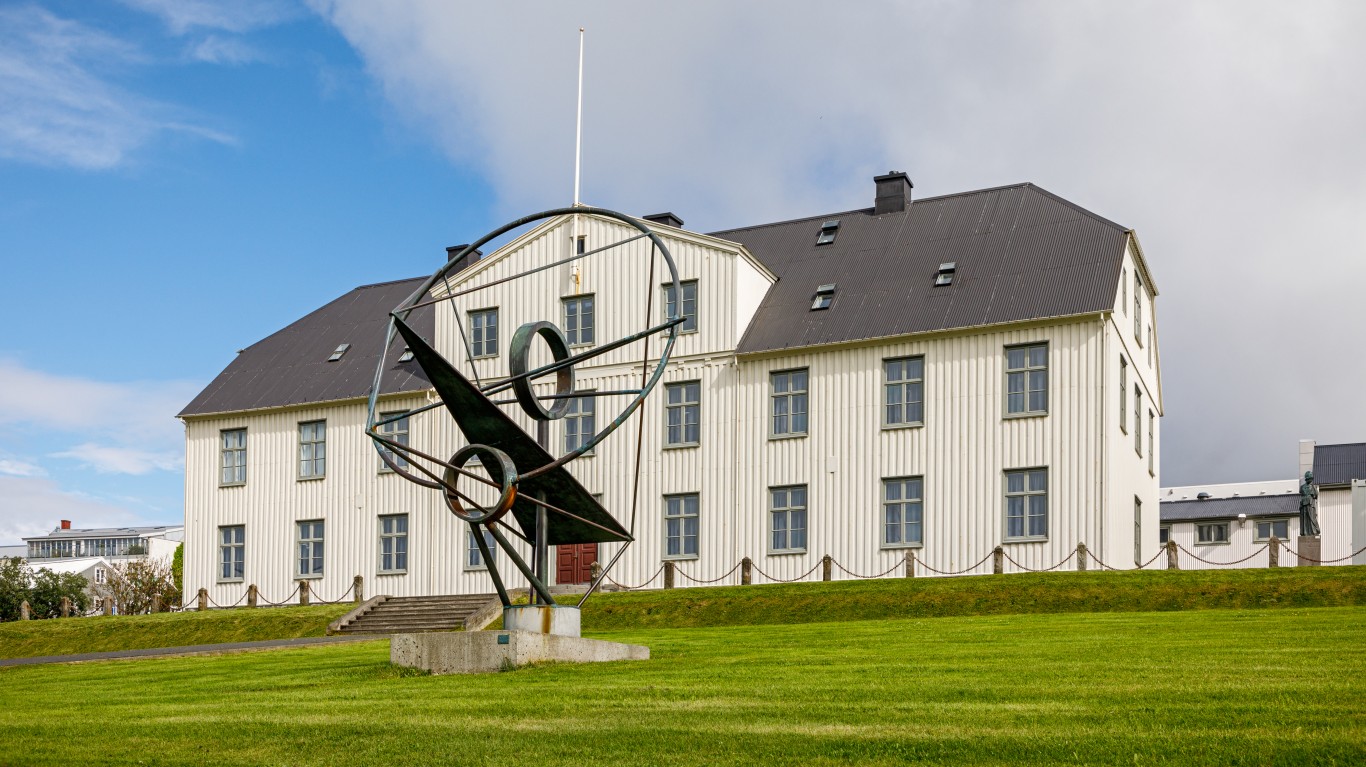 24/7 Wall St.
24/7 Wall St.
